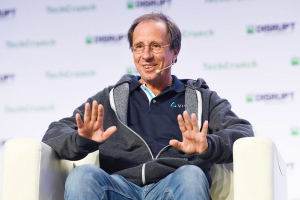Predicting the future is hard, but that doesn’t stop people from trying—especially people named Elon Musk. As he well knows, being bold is pretty much the only way thought castles can become concrete (or wood, brick, or metal).
In this list, WIRED has gathered a handful of far-reaching goals as a framework for what to expect in the decade ahead. Space colonies. A mega-expansion in genome sequencing. Sweet little nuclear power plants. It’s never too early to start holding the promise-makers responsible for their claims. After all, even a bajillionaire needs an accountability buddy.
Welcome to the Moon Base
When the last person left the moon in 1972, few could have predicted that humans wouldn’t return for another 50 years. But NASA says this time around things will be different. The agency is planning a crewed mission to the moon in 2024, and this time it wants to stick around. The idea of the Artemis mission is to lay the foundation for a permanent human presence on and around the moon, which will then serve as a jump-off point for the agency’s journey to Mars.
When Artemis was first announced, it was easy to be incredulous: The agency wants to use a rocket that hasn’t flown yet, it lacks the necessary funds for a moon mission … the list goes on. But this year NASA has made big strides on the mission. The agency has selected a handful of companies to build components for its lunar gateway, a space station that will be in orbit around the moon, and it has solicited designs for a lunar lander. If NASA does hit its 2024 target for a crewed mission to the moon, it’s not so crazy to think it might have a permanent moon base by 2030. —Daniel Oberhaus
Climate Apocalypse Now
In October 2018 the UN warned that humanity has 12 years left to avoid catastrophic climate change. That means that by 2030, we’ll need to cut global greenhouse gas emissions in half, not so much a tall order as a towering one, given that emissions are still rising year to year.
In fairness, the world won’t suddenly end on January 1, 2030, if we don’t meet that goal. But the report is spot-on in its mantra: The faster we switch to a world economy run on renewable energy, the better we can attenuate the consequences—stronger storms, rising seas, fiercer wildfires.
So what can we do? For one, we need carbon taxes the world over: Release greenhouse gases and you pay a fee, which incentivizes the adoption of green energy. We have to massively subsidize solar panels and electric cars. We have to bolster public transportation and redesign cities to discourage the use of cars. And this may sound niche, but it’s hugely important: AC units need a fundamental redesign to be more efficient or 22even sequester CO2, as demand for them soars in lockstep with global temperatures. —Matt Simon
Genomic Mega Millions
If you think you’re currently living in the age of Big DNA, think again. The next decade will see a more than hundredfold boom in the world’s output of human genetic data. The drop in sequencing costs is shifting DNA testing out of the research lab and into mainstream medical practice. Population-based sequencing projects in more than a dozen countries, including the US, are expected to produce 60 million genomes by 2025. By 2030, China hopes to add another 100 million from its own precision medicine initiative.
The impact is hard to even imagine. To date, only about a million people have had their whole genomes sequenced. And it’s not a very diverse cohort. More data from all over the globe will allow for more powerful, fine-grained analyses of how genes shape health and behavior. Very large genetic data sets are ideal for a new technique called Mendelian randomization, which mimics clinical trials, allowing researchers to tease apart causes and correlations. Bigger samples will also make it possible to forecast even complex traits—like height or susceptibility to heart disease—from DNA.
A world so saturated with genetic data will come with its own risks. The emergence of genetic surveillance states and the end of genetic privacy loom. Technical advances in encrypting genomes may help ameliorate some of those threats. But new laws will need to keep the risks and benefits of so much genetic knowledge in balance. —Megan Molteni
Teeny Tiny Nuclear Power Plants
By 2030, the Vogtle power plant in Georgia, the only nuclear power station currently under construction in the US, will have been running for a few years. It’s likely to be the decade’s only new large-scale nuclear power plant to come online, but that doesn’t mean the United States is abandoning fission energy. Instead, expect to see small nuclear reactors start popping up.
Just a fraction of the size of a typical nuclear reactor, these advanced ones can be mass-produced and easily shipped anywhere in the country, no matter how remote. The first small reactors, developed by a company called NuScale Power, should start splitting atoms at Idaho National Laboratories in 2026. The Department of Energy is also working to get even smaller reactors, known as microreactors, churning out electrons at a federal facility by 2027.
Nuclear energy gets a bad rap in some American environmental circles and it’s not hard to see why. The meltdown at Three Mile Island and the decades-long debate about storing nuclear waste at Yucca Mountain have made people skittish about the prospects of this carbon-free energy source, but the UN and many experts say fission energy will be key to hitting our climate goals. The world needs to halve its carbon emissions by 2030, and embracing the new generation of nuclear reactors may be key to making that happen. —Daniel Oberhaus
Elon Musk’s Plan for Mars
Sending life to Mars has been Elon Musk’s goal from day one, and this is the decade he has pegged for his touchdown on the red planet. Originally, he wanted to ship off some plants in a greenhouse, but as SpaceX came to dominate the new space industry, Musk’s ambitions have risen in tandem to include a full-fledged Mars colony. In 2019 he showed off, for the first time, the rocket that could make that happen.
Musk’s Mars timeline is predictably slippery. In 2017 he predicted SpaceX would send a cargo mission to Mars by 2022. The following year, he said the first crewed mission to Mars would happen in seven to ten years, or no later than 2028. Musk is notorious for wildly underestimating the amount of time it takes to accomplish his ambitious goals, so don’t schedule your launch parties just yet. Still, he tends to follow through on his promises—eventually. —Daniel Oberhaus
Goodbye, Poverty!
Predictions for the future often have a sci-fi bent: jet packs, flying cars, brain-computer hybrids. The United Nations is supposed to stick to more solid ground, but some of its Sustainable Development Goals for 2030 sound nearly as fantastical. In a mere 10 years, the UN plans to eradicate poverty “in all its forms everywhere.”
No big deal. The UN already declared October 17 International Poverty Eradication Day. But elevating the lives of those subsisting on less than $1.25 a day will take a little more.
The good news is that crushing global poverty has declined significantly: The World Bank reports that 1.1 billion fewer people live in extreme poverty than did in 1990. The organization has been working with countries to improve education, gender equality, food security, social services, and more. But the gains are unevenly distributed, and climate change now threatens to undo much of the progress, pushing millions back into destitution and creating a “climate apartheid.” This is already happening in Central America and Africa, where drought has caused millions to leave their homes. The prospect of ending poverty seems, well, poor.
But let’s face it, the future is unknowable. The 1900 edition of Ladies’ Home Journal predicted that, within the century, pneumatic tubes would deliver goods to homes and the letters C, X, and Q would drop out of the alphabet. Yet it also foresaw the mobile phone and color photography. Strong science coupled with political will might yet turn climate change around, and transform the UN’s predictions from a dream into reality. —Sara Harrison
More Great WIRED Stories
- Instagram, my daughter, and me
- Tweak these Google Chrome settings to level up your browsing
- Welcome to Rachel, Nevada—the town closest to Area 51
- The Irishman gets de-aging right—no tracking dots necessary
- Ewoks are the most tactically advanced fighting force in Star Wars
- 👁 Will AI as a field “hit the wall” soon? Plus, the latest news on artificial intelligence
- 🎧 Things not sounding right? Check out our favorite wireless headphones, soundbars, and Bluetooth speakers



